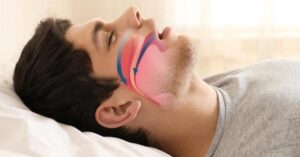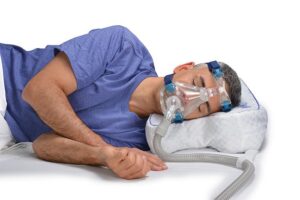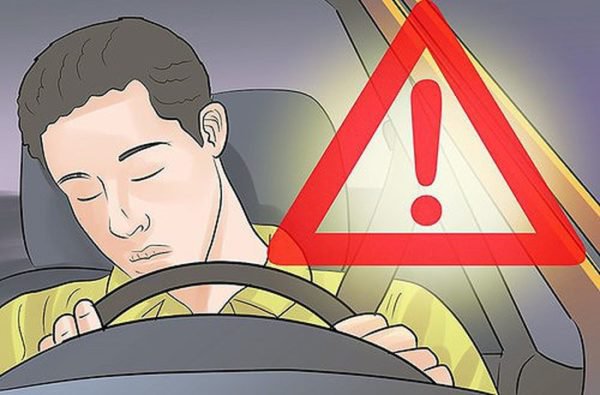Sleep apnea syndrome is a relatively new concept for many people, but in reality, it is a serious condition, particularly the leading cause of drowsiness and nodding off while driving.
Therefore, individuals who frequently travel long distances or those who often experience unexplained drowsiness should not overlook this article.
This is indeed a serious issue, as according to the American Academy of Sleep Medicine, driving while drowsy is as dangerous as driving under the influence of alcohol. Each year, drowsy drivers cause at least 100,000 accidents; many of these are fatal. In the United States, 250,000 people drive while nodding off at the wheel, resulting in 8,000 deaths and 60,000 injuries annually.
Why do so many people find themselves in such a state? One reason is excessive daytime sleepiness caused by a condition known as: sleep apnea syndrome. Numerous studies have indicated that sleep apnea is estimated to be responsible for five to ten percent of all motor vehicle accidents.
The American Academy of Sleep Medicine (AASM) estimates that about 25 million adults in the United States suffer from obstructive sleep apnea, commonly referred to as sleep apnea – a condition characterized by episodes of breathing cessation during sleep, with breathing interruptions often accompanied by snoring and gasping.

People with sleep apnea often exhibit snoring, and those around them frequently complain about their loud snoring, which can be heard clearly even by someone sleeping in a closed room. Individuals with this syndrome often feel sleep-deprived and drowsy during the day, and they can easily fall asleep even while engaged in activities that require high concentration, such as driving or operating trains… and this is also the cause of many traffic accidents.
Doctors explain that individuals with sleep apnea experience episodes of breathing cessation at night, making it difficult for them to achieve deep sleep like normal individuals, leading to disrupted sleep structure. As a result, even though these individuals may sleep a lot, they still feel tired every morning upon waking and always feel sleep-deprived.
Many people are concerned about the tendency to doze off while driving, and they have tried various medications without success. Doctors indicate that not only drivers but also many other individuals suffering from this condition can cause serious consequences, such as crew members, train operators, traffic management personnel, and security officers on duty…
However, addressing daytime sleepiness and improving the quality of life for patients can be very feasible if treatment is adhered to. Moderate to severe obstructive sleep apnea is often treated with continuous positive airway pressure (CPAP) therapy to prevent airway obstruction during sleep. Preventing airway obstruction during sleep allows patients to easily enter deep sleep without disrupting the sleep structure, and they will feel refreshed after each awakening, especially without experiencing daytime sleepiness. Some patients have said, “I have never slept like this” the day after their first CPAP trial.
CPAP therapy is a method that supports patients with a personal ventilator while sleeping. The machine continuously delivers pressurized air through a nasal mask or a mask covering both the nose and mouth; the pressure helps keep the upper airway from collapsing while sleeping. This not only ensures physiological sleep but can also effectively help patients reduce snoring. Many people have reported that their loved ones have stopped snoring since using the CPAP machine.

To demonstrate the effectiveness of treatment, Ludger Grote, associate professor at the Sleep and Alertness Disorders Center at the Sahlgrenska Academy, reported: “Studies have provided very strong evidence that patients with obstructive sleep apnea have a higher risk of traffic accidents, and this risk can be modified if CPAP treatment is fully utilized.”
Using data from the Swedish Traffic Accident Registry (STRADA), the research team compared the accident rates among 1,478 patients with obstructive sleep apnea in clinical sleep laboratories and a control population of 635,786 drivers in Sweden.
During the more than 10-year study period, they found 21,118 individuals with a record of at least one motor vehicle accident in the control population. They also discovered that 82 motor vehicle accidents occurred while a patient with obstructive sleep apnea was behind the wheel, with 56 accidents occurring in the 5 years prior to diagnosis and 26 in the year following diagnosis.
When analyzing the data, researchers found that patients with obstructive sleep apnea were nearly 2.5 times more likely to be the driver in a motorcycle accident compared to drivers in the general population.
Further analysis identified several factors independently increasing the risk of traffic accidents in patients with obstructive sleep apnea while driving, such as severe daytime sleepiness, sleeping less than 5 hours per night, or using sleeping pills.
Patients with sleep apnea who use CPAP have a 70% reduction in the risk of higher accidents. The study also analyzed that patients with sleep apnea using CPAP therapy for an average of 4 hours or more each night showed a 70% reduction in the risk of being involved in vehicle accidents while driving. The conclusions of the studies indicated: “Identifying and effectively treating sleep apnea is essential to reduce preventable accidents that threaten life due to drowsy driving.”
With the development of transportation in many countries, if you experience drowsiness while participating in traffic or have previously encountered incidents related to a lack of alertness due to drowsiness while driving, you should consult a specialist doctor for advice and evaluation of your sleep quality. This way, treatment can be directed to minimize the risk of potential accidents.

